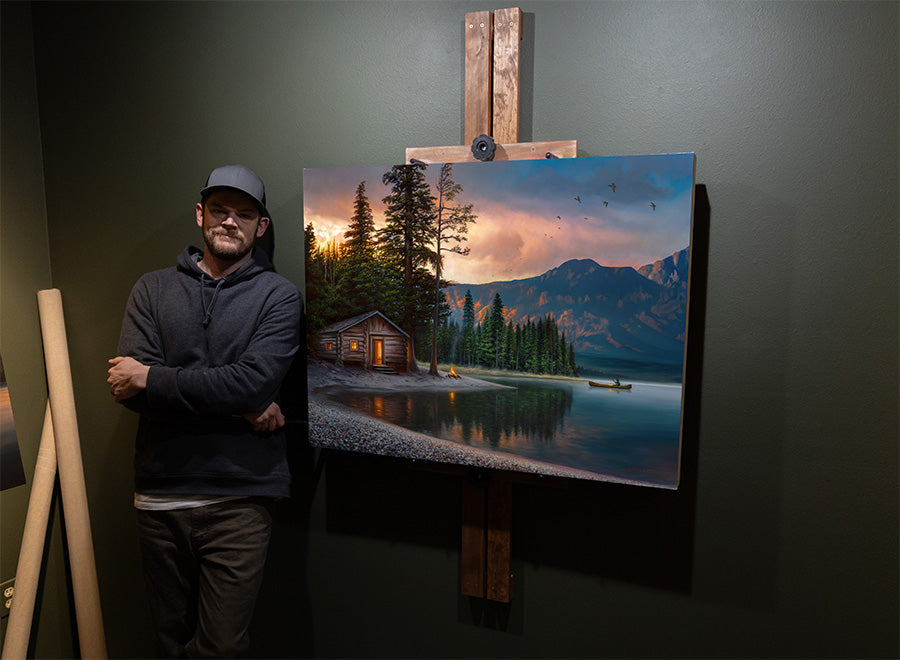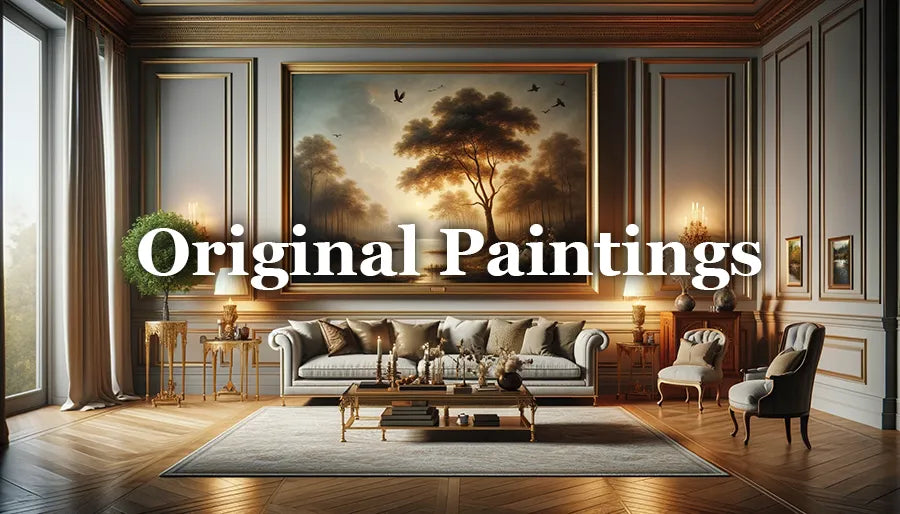This blog is supported through the affiliate links below
The Best Blending Brushes for Painting: Understanding Their Capabilities and How to Choose the Right Ones for You

Note: This blog contains affiliate links and purchasing through them supports our site at no extra cost to you.
What kinds of blending brushes to look for
When it comes to blending, there are two main types of brushes to consider: natural and synthetic. Natural brushes are made from animal hair, typically hog bristle, sable, or squirrel. Synthetic brushes are made from nylon or other synthetic fibers. Both types have their pros and cons, so let's dive in and learn a little more about each.
Natural brushes are a favorite among oil painters, as they offer a lot of control and spring. Hog bristle brushes are the most commonly used natural brushes for blending. They are durable, stiff, and hold their shape well, making them a great choice for blending and working with thicker paints. Sable brushes are another popular choice, as they are soft and supple, making them ideal for blending delicate details and achieving smooth gradations. Squirrel brushes are less commonly used, but they offer a unique blend of softness and spring that makes them great for blending fine details and working in tight spaces.
Synthetic brushes are a popular choice for artists working in acrylics and watercolors, but don't be hesitant to try them with oils either. Sometimes I prefer to use synthetic regardless of what medium I'm working in. Nylon brushes are the most commonly used synthetic brushes for blending. They are soft and flexible, which makes them ideal for blending smooth gradations and creating fluid washes. Other synthetic fiber brushes like Taklon and Polyester are also popular for blending as they are also affordable and hold their shape well.

When choosing a brush for blending, consider what type of paint you'll be using, as well as your personal style and the art you want to create. If you're looking for a brush that will provide a lot of control and precision, a hog bristle brush is a great choice. If you're looking for a brush that will provide a smoother, more fluid blend, a sable or synthetic brush is a better option. Sometimes there's a sweet spot somewhere in the middle of all this, so test continuously in your process to learn what's best for you.
No matter what type you choose, just make sure to choose brushes that are well-made, have the right bristle shape, and are appropriate for the type of paint you're using. With the right brushes in hand, you'll be able to achieve the perfect blend, and your paintings will come to life with depth, texture, and vibrancy.

The best blending brushes to shop for
When it comes to specific brands and styles of brushes that are best for blending, here are some popular options to check out:
For Natural Brushes:
- Winsor & Newton Series 7: This classic brand offers a range of high-quality sable brushes that are ideal for blending. The Series 7 brushes are particularly popular, as they offer excellent spring and control.
- Da Vinci Maestro: This brand offers a range of natural brushes that are well-regarded by artists. Their Maestro line features a variety of bristle types, including sable and squirrel, making them a great choice for blending.
- Robert Simmons: This brand offers a range of brushes that are popular with acrylic, oil and watercolor artists. Their Signet line features hog hair brushes that are ideal for blending. The fan blenders in this line are some of my favorite for large areas when I'm working in oils.

For Synthetic Brushes:
- Liquitex Professional: This brand offers a range of synthetic brushes that are ideal for artists working in acrylics. Their professional line features brushes made from high-quality nylon fibers, making them a great choice for blending.
- Princeton Neptune: This brand offers a range of synthetic brushes that are well-suited for blending. Their Neptune line features a range of brushes with different bristle shapes and sizes, making them a versatile choice for artists working in watercolors or acrylics.
- Royal & Langnickel Zen series: This brand offers a range of synthetic brushes that are well-suited for blending. The Zen series features a variety of brushes with different bristle shapes and sizes, making them a great choice for artists who want to achieve a smooth, fluid blend.

In addition to the above brands, it's worth considering other attributes like bristle shape, size, and density when choosing a brush for blending. Flat brushes, for example, are great for laying down large areas of color and blending large areas, while round brushes are ideal for blending smaller, more detailed areas. If possible, you should always experiment working with different brushes to find the ones that you like best and work for your painting style.
My secret weapon for blending
In addition to the Fan Blender which I mentioned above, there's one more that I don't think I could live without when it comes to creating smooth and unique blends. The Round Blender Brush is one of the nicest little brushes I've used for blending both oils and acrylics. This brush has just enough bounce combined with a perfect smoothness that allows you to create really controlled blends. I use this brush for tight areas as well as nice, soft, dynamic textures in things such as clouds. If I had to pick only two brushes to have in my arsenal, these two would be it.
Whether you opt for natural or synthetic brushes, just remember that nothing beats trial and error. Take the time to experiment with different brushes and don't be afraid to invest in a few higher-quality brushes. Having the right tools can help you achieve the beautiful, seamless blends that you're after. Hopefully this has helped give you a few new things to think about when it comes to your blending quiver. Happy blending!
Grow Your Painting Skills and Resources
Instant access to 1000s of royalty-free reference photos of landscapes and wildlife as well as step by step oil painting videos. Checkout My Memberships for more info.

I'm Chuck Black, landscape and wildlife artist based in Southwest Montana.





